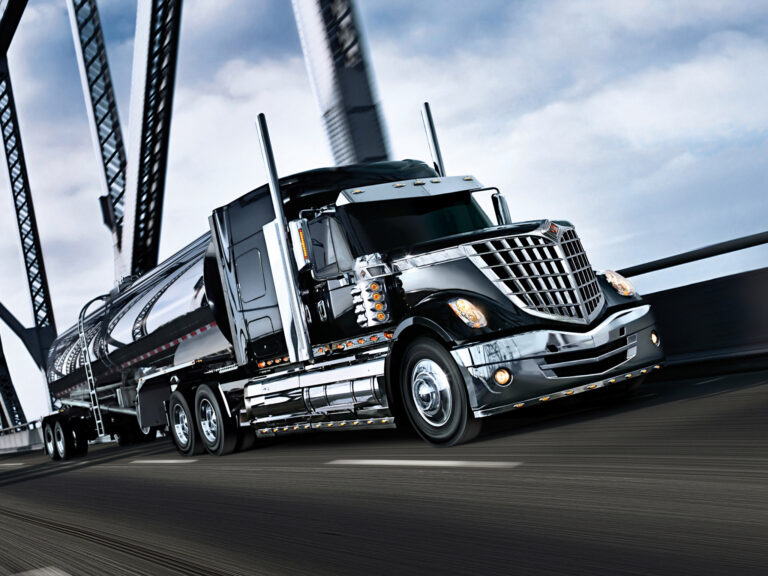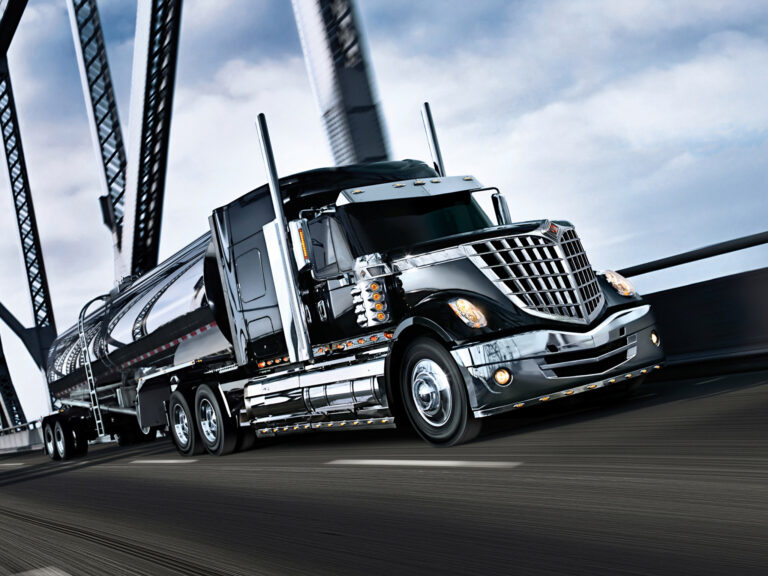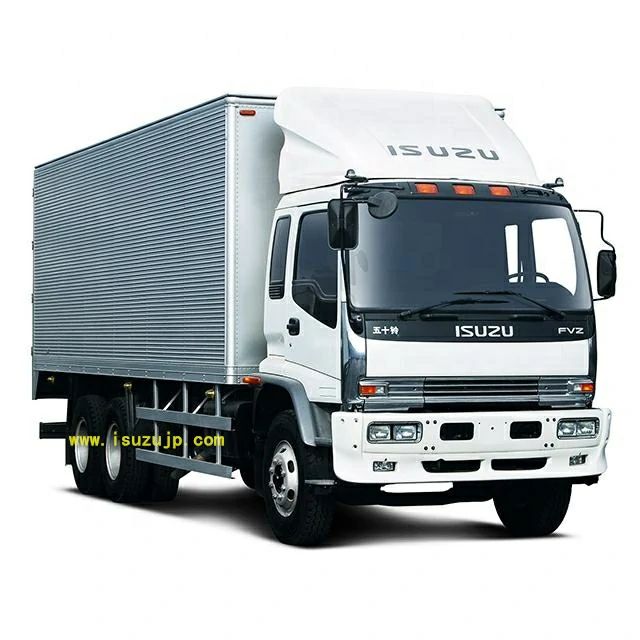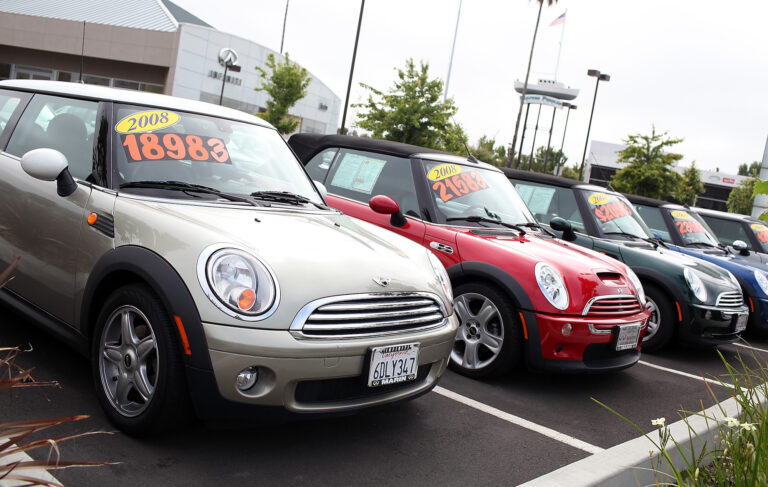Used Ram 2500 Diesel Trucks For Sale: Your Ultimate Buying Guide
Used Ram 2500 Diesel Trucks For Sale: Your Ultimate Buying Guide cars.truckstrend.com
The roar of a Cummins engine, the unmistakable silhouette of a heavy-duty pickup, and the promise of unparalleled towing and hauling capability – these are the hallmarks of a Ram 2500 Diesel truck. For many, a brand-new heavy-duty truck is out of reach financially, but the robust durability and legendary longevity of the Ram 2500 diesel make the used market an incredibly appealing prospect. Purchasing a pre-owned Ram 2500 diesel isn’t just about saving money; it’s about investing in a proven workhorse that can tackle everything from cross-country RV trips to demanding construction sites, often with hundreds of thousands of miles left in its lifespan.
This comprehensive guide is designed to equip you with the knowledge and insights needed to confidently navigate the market for used Ram 2500 diesel trucks. We’ll delve into the specifics that make these trucks so desirable, what to look for, what to avoid, and how to make an informed purchase that perfectly suits your needs and budget.
Used Ram 2500 Diesel Trucks For Sale: Your Ultimate Buying Guide
Why Choose a Used Ram 2500 Diesel? The Power of Cummins
At the heart of every Ram 2500 diesel lies the legendary Cummins Turbo Diesel engine. This isn’t just an engine; it’s a statement of power, reliability, and enduring performance. Since its introduction in Ram (then Dodge Ram) trucks in 1989, the Cummins engine has built a reputation for its robust inline-six design, immense torque production, and surprising fuel efficiency for a vehicle of its size and capability.
Key Benefits of a Used Ram 2500 Diesel:
- Unmatched Durability & Longevity: Cummins engines are renowned for lasting hundreds of thousands of miles, often exceeding 300,000 with proper maintenance. This makes buying used a less risky proposition than with many other powertrains.
- Superior Towing & Hauling: The immense low-end torque of the Cummins diesel makes light work of heavy loads. Ram 2500 diesels consistently offer some of the highest towing and payload capacities in their class, ideal for fifth-wheel campers, large utility trailers, or heavy equipment.
- Cost Savings: New heavy-duty trucks command premium prices. Buying used allows you to acquire a highly capable vehicle at a fraction of the original cost, letting you allocate funds to other necessities or upgrades.
- Slower Depreciation: While new vehicles rapidly depreciate, a well-maintained used Ram 2500 diesel tends to hold its value better, particularly given the strong demand for these reliable trucks.
- Fuel Efficiency (for its class): While heavy-duty trucks aren’t "fuel-efficient" in the traditional sense, diesel engines typically offer better MPG than their gasoline counterparts, especially when under load or during highway cruising.
- Robust Chassis & Drivetrain: Beyond the engine, Ram 2500 trucks are built on a heavy-duty frame with robust suspension and drivetrain components designed to withstand rigorous use.

Key Generations and What to Look For
Understanding the different generations of Ram 2500 diesel trucks is crucial, as each brings its own characteristics, common issues, and price points.
-
3rd Generation (2003-2009): These trucks often represent excellent value. They feature the 5.9L Cummins (until mid-2007) and later the 6.7L Cummins.
- 5.9L Cummins (2003-2007.5): Known for its mechanical simplicity and legendary reliability. Fewer emissions controls mean fewer potential headaches. Look for signs of fuel system issues (injectors, lift pump) on higher mileage units.
- 6.7L Cummins (2007.5-2009): Introduced with more power and emissions equipment (DPF – Diesel Particulate Filter, EGR – Exhaust Gas Recirculation). Check for proper operation of emissions systems.
- Common Issues: Front-end components (ball joints, steering linkage), potential for rust in cab corners and rocker panels, some early 6.7L EGR valve issues.
- Why Buy: Rugged, reliable, often lower prices, simpler to work on.
-
4th Generation (2010-2018): These trucks saw significant interior upgrades, improved ride quality (especially with the coil-spring rear suspension introduced in 2014), and increased power. All 4th Gen diesels feature the 6.7L Cummins.
- Evolution: Early 4th gens (2010-2012) still used leaf springs in the rear. 2013+ models got a significant refresh with improved interiors, new infotainment options, and the option for a more powerful High Output Cummins. The 2014+ models introduced the coil-spring rear suspension for a much smoother unladen ride.
- Common Issues: Emissions system issues (DPF clogs, EGR cooler failures) are more prevalent due to increased complexity. Some early 6.7L engines experienced exhaust manifold leaks. Check for proper DEF (Diesel Exhaust Fluid) system operation if applicable (introduced in 2013).
- Why Buy: Modern amenities, strong power, excellent ride comfort (2014+), still a strong value.
-
5th Generation (2019-Present): These are the most refined, powerful, and technologically advanced Ram 2500s. They feature completely redesigned interiors, advanced safety features, and even higher towing capacities.
- Engine: Continues with the 6.7L Cummins, with standard and High Output versions offering immense power and torque.
- Common Issues: Being newer, long-term common issues are still emerging. Higher purchase price is the primary consideration.
- Why Buy: Cutting-edge technology, luxurious interiors, highest towing/payload capabilities, best ride quality.
Essential Pre-Purchase Checklist: What to Inspect
Buying a used heavy-duty truck requires meticulous inspection. Don’t rush the process.
-
Documentation & History:
- Service Records: Crucial for a diesel. Look for consistent oil changes (diesel engines have specific oil requirements), fuel filter replacements, transmission fluid changes, and any major repairs.
- VIN Check: Run a CarFax or AutoCheck report. Look for accident history, flood damage, salvage titles, odometer discrepancies, and consistent service history.
- Ensure the title is clear and matches the VIN.
-
Exterior Inspection:
- Rust: Common areas include rocker panels, cab corners, wheel wells, and especially the frame rails. Surface rust is often manageable, but structural rust is a red flag.
- Body Panels: Check for consistent panel gaps, mismatched paint, or signs of accident repair.
- Tires: Check tread depth and even wear. Uneven wear can indicate alignment or suspension issues.
- Suspension: Look for sagging, broken springs, or leaking shocks.
- Lights: Ensure all exterior lights are functioning.
-
Engine Bay & Mechanicals:
- Leaks: Look for oil, coolant, or diesel leaks. A clean engine bay might indicate a recent detail to hide leaks.
- Fluid Levels & Condition: Check engine oil (should not be milky or excessively sludgy), coolant (should be clean, not rusty or oily), transmission fluid (red, not burnt smell), and power steering fluid.
- Belts & Hoses: Check for cracks, fraying, or bulges.
- Batteries: Diesel trucks typically have two batteries. Check for corrosion on terminals.
- Cold Start: Ask the seller to not warm up the truck before you arrive. Listen for abnormal noises, excessive white or blue smoke, or difficulty starting.
- Emissions Equipment (if applicable): On 6.7L models, visually inspect the DPF and EGR components.
-
Interior & Electronics:
- Dashboard Warnings: Ensure no check engine light, ABS light, or other warning lights are illuminated after startup.
- HVAC: Test AC and heat.
- Infotainment: Check radio, navigation, Bluetooth functionality.
- Power Features: Test windows, locks, mirrors, seats.
- Seating: Look for rips, tears, or excessive wear.
-
Test Drive:
- Engine Performance: Accelerate smoothly, then firmly. Listen for turbo spool, abnormal noises.
- Transmission: Check for smooth shifts, no slipping or harsh engagement in all gears (including reverse). Test 4×4 if applicable.
- Brakes: Check for strong, even braking without pulling or pulsing.
- Steering: Should be tight and responsive, without excessive play or wandering.
- Suspension: Drive over bumps and rough roads to listen for clunks, squeaks, or excessive bouncing.
-
Pre-Purchase Inspection (PPI): This is non-negotiable for a used diesel. Have an independent, reputable mechanic (preferably one specializing in diesel trucks) perform a thorough inspection. They have diagnostic tools and expertise to spot issues you might miss.
Understanding Towing & Hauling Capacities
Ram 2500 diesel trucks are built for work, but their capabilities vary significantly based on year, engine output, transmission, axle ratio, and configuration (cab style, bed length, 2WD/4WD).
- Gross Vehicle Weight Rating (GVWR): The maximum permissible weight of the truck itself, including its fuel, passengers, cargo, and tongue weight of a trailer.
- Gross Combined Weight Rating (GCWR): The maximum permissible weight of the loaded truck AND a loaded trailer combined. This is the most important number for overall towing capacity.
- Payload Capacity: The maximum weight of cargo and passengers the truck can carry, including the tongue weight of a conventional trailer or pin weight of a fifth-wheel/gooseneck.
- Max Towing Capacity: The maximum weight a truck can tow, assuming the truck itself is loaded only with a driver.
Always refer to the specific truck’s owner’s manual or the Ram towing guide for its exact capacities. Do not rely solely on online estimates, as they can vary. Ensure the truck you choose can safely and legally handle your intended loads.
Budgeting for a Used Ram 2500 Diesel
The purchase price is just one piece of the puzzle. Factor in these ongoing costs:
- Fuel: Diesel fuel is often more expensive per gallon than gasoline, though you’ll generally get better mileage.
- Maintenance: Diesel engines require specific maintenance (e.g., fuel filter replacements every 15,000-30,000 miles, specialized diesel engine oil) that can be more costly than gas engines.
- DEF (Diesel Exhaust Fluid): If you’re looking at 2013+ models, you’ll need to replenish DEF regularly, typically every 5,000-10,000 miles depending on use.
- Insurance: Heavy-duty trucks can have higher insurance premiums.
- Potential Repairs: While reliable, any complex machine can have issues. Diesel engine repairs, especially those involving the fuel or emissions systems, can be expensive due to specialized parts and labor. Set aside a contingency fund.
Where to Find Your Next Used Ram 2500 Diesel
- Dealerships: New car dealerships often have trade-ins, and dedicated used truck dealerships specialize in these vehicles. They offer financing and often some form of warranty, but prices can be higher.
- Private Sellers: Online marketplaces (Facebook Marketplace, Craigslist, Autotrader, Cars.com) are popular. You can often find better deals, but you’re responsible for all checks and paperwork. Be wary of scams.
- Online Auctions: Sites like eBay Motors, Bring a Trailer (for high-end/unique), or local government/fleet auctions. Can offer good deals but come with higher risk as vehicles are often sold "as-is" with limited inspection opportunities.
Navigating Common Issues & Solutions
Being aware of potential issues helps you inspect effectively and budget for future maintenance.
- Emissions System Failures (6.7L Cummins, especially 2013+): DPFs can clog, EGR valves can stick, and DEF systems can malfunction. Symptoms include reduced power, warning lights, and increased fuel consumption.
- Solution: Proper maintenance (regular DPF regeneration, DEF refills), using quality diesel fuel, and considering professional DPF cleaning or repair. Some owners consider "delete kits" (removing emissions components), but these are illegal for road use in most jurisdictions and will void warranties. It is crucial to understand the legal implications of any emissions modification in your area.
- Fuel System Issues (5.9L & 6.7L): Injector failure, lift pump issues (especially on 5.9L), and CP3/CP4 high-pressure fuel pump failures (CP4 is more common in Ford/GM, but early 6.7L Cummins did use a variant; most 6.7L use the more robust CP3).
- Solution: Use high-quality fuel, replace fuel filters religiously, consider adding a fuel additive for lubricity and cetane.
- Front End Components: Ball joints, tie rods, and steering box wear are common due to the heavy front axle and large tires.
- Solution: Regular inspection and replacement with quality aftermarket parts (e.g., Moog, Carli) for improved durability.
- Rust: As mentioned, a common issue on older trucks, particularly in northern climates.
- Solution: Thorough inspection, avoid severely rusted frames. For minor surface rust, consider rust converter and undercoating.
Practical Advice and Actionable Insights
- Define Your Needs: What will you primarily use the truck for? Towing, hauling, daily driving, off-roading? This will dictate the year, engine, and features you need.
- Set a Realistic Budget: Include not just the purchase price, but also insurance, registration, and a contingency fund for immediate maintenance or repairs.
- Be Patient: The used market fluctuates. Don’t jump on the first truck you see. The right truck, at the right price, will eventually appear.
- Don’t Fear Miles (within reason): A well-maintained Cummins with 200,000 miles can be a better buy than a neglected one with 100,000. Service records are paramount.
- Negotiate: Always negotiate the price based on your inspection findings and market research.
Used Ram 2500 Diesel Price Guide (Estimated Ranges)
Prices for used Ram 2500 Diesel trucks vary wildly based on year, mileage, condition, trim level, 2WD/4WD, and geographic location. The table below provides estimated price ranges for different generations, assuming average condition and mileage. These are not definitive prices but rather a general guide.
| Generation/Year Range | Engine Type (Cummins) | Average Mileage Range | Estimated Price Range (USD) | Key Features/Considerations |
|---|---|---|---|---|
| 3rd Gen | ||||
| 2003-2007.5 | 5.9L Turbo Diesel | 180,000 – 300,000+ | $10,000 – $25,000 | Simpler mechanics, fewer emissions controls. Look for rust, front end wear, fuel system health. Excellent for those valuing simplicity. |
| 2007.5-2009 | 6.7L Turbo Diesel | 150,000 – 250,000+ | $14,000 – $28,000 | First with 6.7L and DPF/EGR. Check emissions system health. Still relatively basic interiors. |
| 4th Gen | ||||
| 2010-2012 | 6.7L Turbo Diesel | 120,000 – 200,000 | $18,000 – $32,000 | Improved interiors, more power. Still uses leaf springs in rear. Check for emissions issues. |
| 2013-2018 | 6.7L Turbo Diesel | 80,000 – 180,000 | $25,000 – $45,000 | Significant refresh (interior, optional coil-spring rear 2014+). DEF system introduced (2013+). Strong resale value. |
| 5th Gen | ||||
| 2019-Present | 6.7L Turbo Diesel | 30,000 – 100,000 | $45,000 – $75,000+ | Most modern, highest capacities, luxurious interiors, advanced tech. Higher price point, still under warranty for many. |
Disclaimer: These prices are estimates only and can vary significantly based on specific trim (Tradesman, Big Horn, Laramie, Longhorn, Limited), 2WD/4WD, specific options, condition, service history, and geographic market demand.
Frequently Asked Questions (FAQ)
Q: Is a used diesel worth it over a used gas Ram 2500?
A: For heavy towing, hauling, or high mileage use, absolutely. Diesels offer superior torque, better fuel economy under load, and incredible longevity. For occasional light use or short trips, a gas V8 might be more cost-effective due to lower maintenance and purchase costs.
Q: What’s the best year for a used Ram 2500 diesel?
A: There’s no single "best" year. The 5.9L Cummins (2003-2007.5) is prized for its simplicity and mechanical reliability. The 2014+ 4th Gen 6.7L models offer a great balance of modern features, power, and the comfortable coil-spring rear suspension without the high price tag of the 5th Gen. Your "best" year depends on your budget, desired features, and willingness to manage potential emissions system complexities.
Q: How many miles are too many for a used Cummins?
A: A Cummins engine is often just "broken in" at 100,000 miles. Many run reliably past 300,000 or even 500,000 miles with proper maintenance. Focus less on the odometer number alone and more on consistent service records, the truck’s overall condition, and a thorough pre-purchase inspection.
Q: What are DPF and DEF, and do I need to worry about them?
A: DPF (Diesel Particulate Filter) and DEF (Diesel Exhaust Fluid) are parts of the modern emissions control system on 6.7L Cummins trucks (DEF introduced in 2013). They reduce harmful pollutants. While effective, they can require maintenance and be costly to repair if neglected or malfunction. It’s a trade-off for cleaner emissions and higher power outputs in newer trucks.
Q: Should I get a pre-purchase inspection?
A: Absolutely, yes. For a complex and expensive vehicle like a used heavy-duty diesel truck, a professional pre-purchase inspection by a reputable diesel mechanic is highly recommended. It can uncover hidden issues and save you thousands of dollars in unexpected repairs down the line.
Q: Are "delete kits" legal?
A: "Delete kits" involve removing or disabling emissions control components (DPF, EGR, DEF systems). While they can improve performance and reduce maintenance on these systems, they are illegal for street use in the United States and most other countries. Using a deleted truck on public roads can result in significant fines, failure of emissions inspections, and voided warranties. It’s best to stick with a truck that has its emissions systems fully intact and functional unless it’s strictly for off-road or competition use.
Conclusion
A used Ram 2500 diesel truck with the Cummins engine offers an unparalleled combination of power, durability, and value for those who need a serious work or play vehicle. By understanding the different generations, knowing what to inspect, budgeting wisely, and performing thorough due diligence, you can confidently navigate the used market. While the initial investment and ongoing maintenance can be higher than a gasoline truck, the legendary longevity and capability of a well-maintained Ram 2500 diesel often make it a wise and rewarding long-term investment. Take your time, do your homework, and you’ll find a heavy-duty companion ready for any challenge you throw its way.





